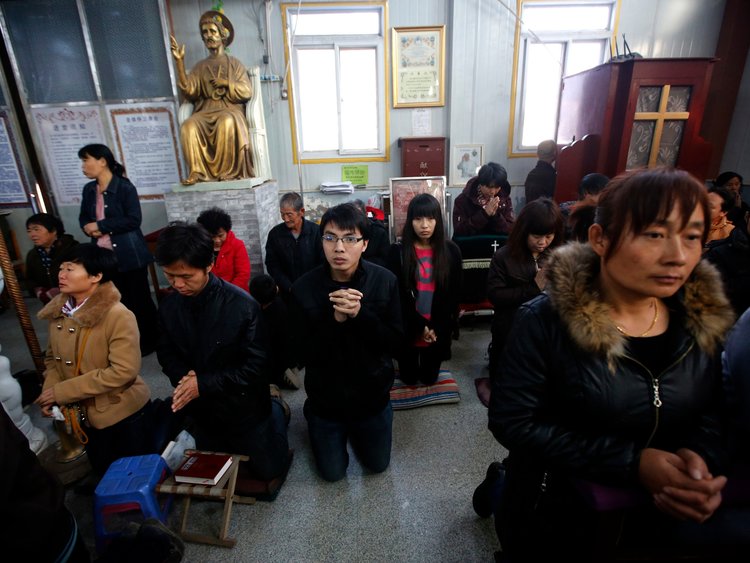CHINA – VATICAN
PIME missionary, the document released yesterday answers some of the perplexities of conscience of many Chinese priests. But it fails to realise the deep restrictions, which undermine the Catholic faith, to which the Church in China is subjected. He hopes that the Holy See will also speak with the Chinese authorities to protect individuals’ freedom of conscience and prevent the use of religion for political purposes.
by Sergio Ticozzi
06/29/2019, 13.36

Hong Kong (AsiaNews) – Fr Sergio Ticozzi, a missionary with the Pontifical Institute for Foreign Missions (PIME) in Hong Kong and China for over 40 years, has reacted to the release of thePastoral guidelines of the Holy See concerning the civil registration of clergy in China.
In his view, the guidelines are “a step forward” towards eliminating the ambiguities that hover over the relations between the Chinese Church, the Holy See and Beijing. At the same time, they are “somewhat theoretical and optimistic” because they do not take into full account the restrictions imposed on the institutions of the Church and the life of Catholics in China, and in fact manipulate the “Catholic doctrine” that the Holy See wishes to preserve.
Fr Ticozzi, who was a member of the Vatican Commission on the Church in China set up by Benedict XVI and shut down under Pope Francis, would also like to see the Holy See issue other statements directed at China’s authorities, expressing opposition to the restrictions that are applied on Catholic believers, priests and bishops, above all, against “the manipulation of religion for political purposes”.
Fr. Ticozzi was among the first to ask that the Holy See to provide directives on how to deal with the registration of the clergy, given the great suffering in which our brothers and sisters find themselves in China.
The Holy See has finally responded to the perplexities of conscience of many Chinese priests who are being forced to become official by registering with the Chinese Patriotic Catholic Association and accept the principles of Church autonomy and independence.
The statement that “the Holy See continues to ask that the civil registration of the clergy take place in a manner that guarantees respect for the conscience and the profound Catholic convictions of the persons involved” is undoubtedly positive. According to the document, the lack of this occurs “notwithstanding the commitment assumed by the Chinese authorities to respect also Catholic doctrine”.
It would therefore seem that the Interim Agreement includes this point, but since it has remained secret, local authorities, with the complicity of their central counterparts, have continued the practice of forcing the unofficial clergy to register in accordance with the regulations in place; indeed, in some cases making them more restrictive.
Another positive point in the Holy See document is the attempt to explain the meaning of “independence”, that is “not in an absolute sense, namely as separation from the Pope and the Universal Church, but rather relative to the political sphere”. After indicating the new elements of the current situation, it goes on to say that “In light of these facts, it is legitimate to expect a new approach on the part of everyone, also when addressing practical questions about the life of the Church.”
All this is undeniable, but given the new elements cited, one has the impression that this reflects a somewhat theoretical and optimistic view that does not take into consideration the actual restrictions imposed on the institutions of the Church, above all on the life of Catholics (especially young people under the age of 18) and the inappropriate measures aimed at ‘sinicisation’.
Above all, it does not seem to realise the clear intent on the part of China’s authorities to reduce the Church to a state institution and the clergy to state officials. Nor is there any concrete assessment of the Interim Agreement, which the former use for political purposes, always speaking of the ‘Vatican’ and not of the ‘Successor of Peter’, paying no attention to “the commitment assumed by the Chinese Authorities to also respect Catholic doctrine,” as the document itself admits.
The Pastoral Guidelines rightly stress respect for the freedom of conscience of individuals, suggesting as well actual ways to protect it in case the text of the statement to be signed for official registration does not appear to respect the Catholic faith. Furthermore, “the Holy See understands and respects the choice of those who, in conscience, decide that they are unable to register under the present conditions”. Yet, the Holy See should also ask Chinese authorities to adopt the same attitude.
In conclusion, this document is undoubtedly a step forward in clarifying the ambiguities that characterise the Church in China and the relations of the Holy See with Chinese authorities. However, we hope to see the Holy See issue other statements concerning the aforementioned restrictions against the Church, above all the manipulation of religion for political purposes.


 ENG
ENG